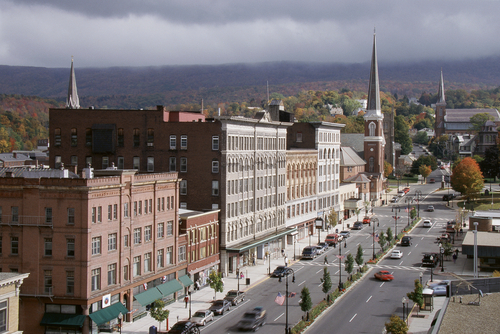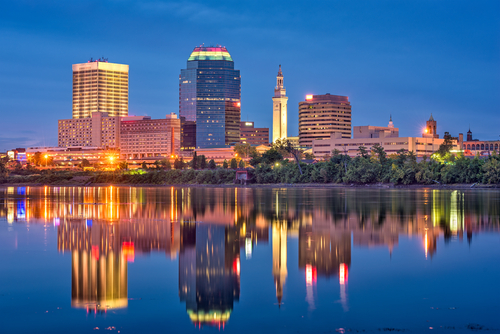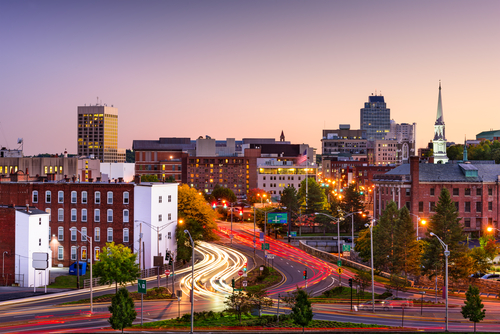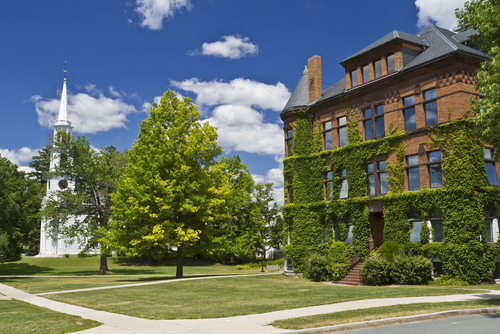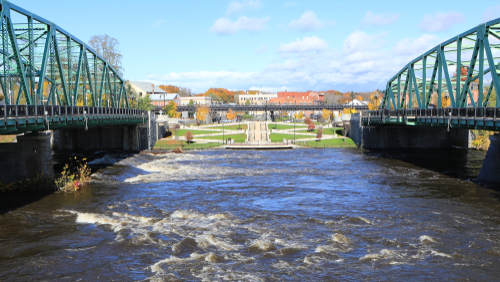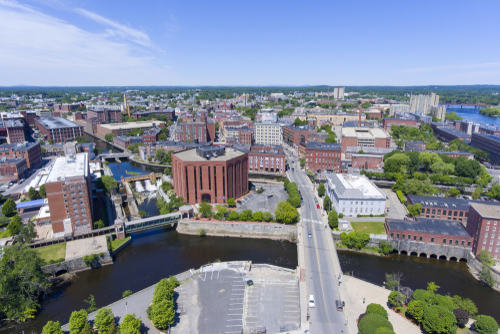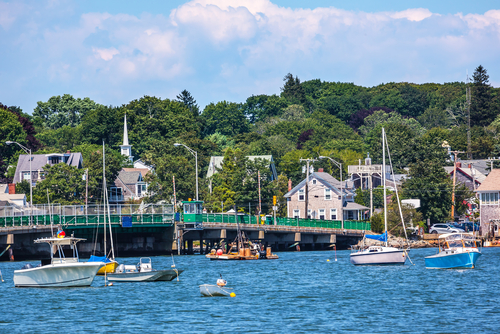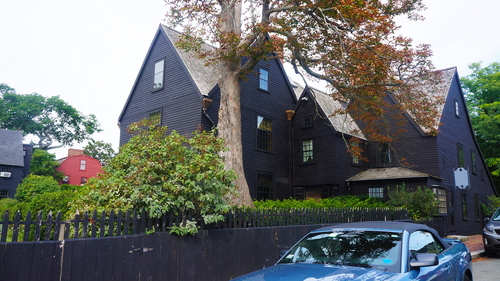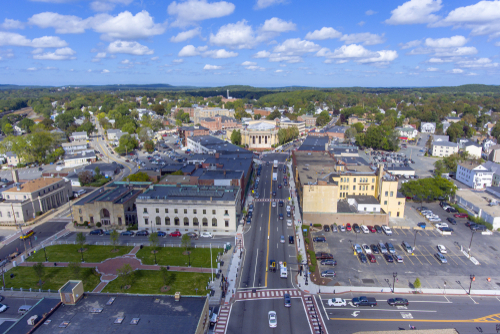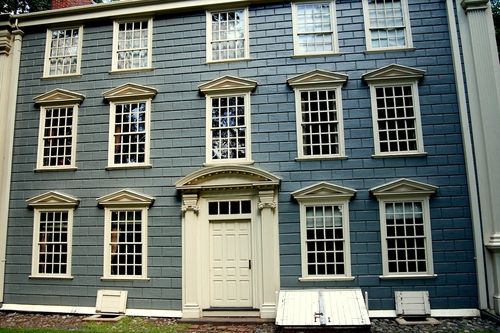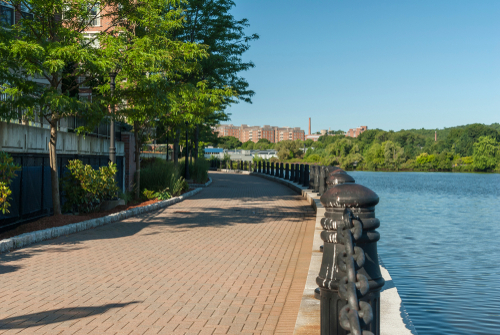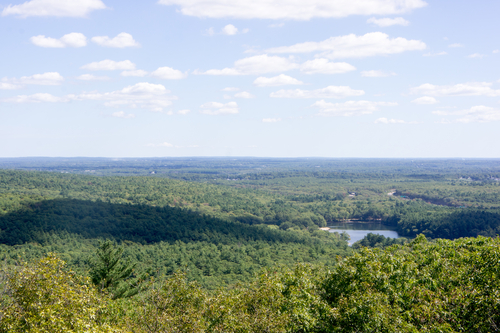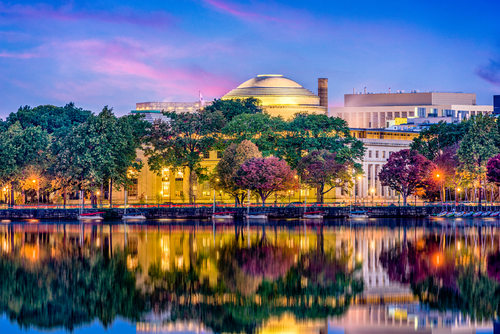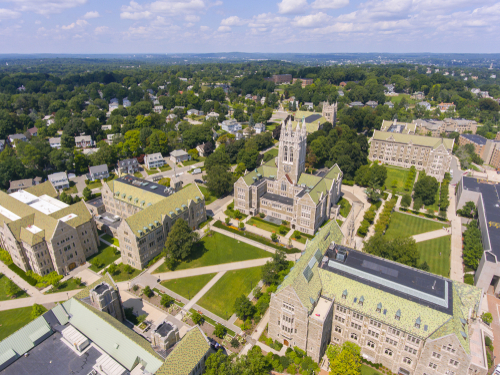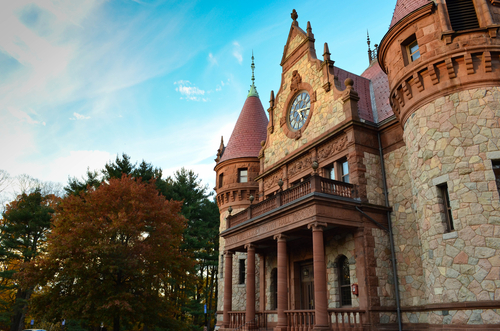
Perusing the best New England college towns? Though there are more than 100 colleges and universities in the state of Massachusetts — that’s a whole lot of students! — Massachusetts is not too friendly to those on a budget. In fact, the cost of living in The Bay State averages 39% higher than the rest of the country. Fortunately, college towns vary dramatically when it comes to the cost of living.
Methodology for New England College Towns–Massachusetts
To figure out which college towns are most affordable, we looked at costs for:
- housing
- groceries
- health care
- transportation
- utilities
We compared them to the national average. We also considered features like:
- amenities
- crime rates
- public transportation
- overall quality of life
We then narrowed our list down to the 20 most affordable college towns in Massachusetts. All data was taken from Sterling’s Best Places.
1. North Adams
Massachusetts College of Liberal Arts
Cost of Living: 12% Lower than the National Average; 51% Lower than the State Average
North Adams, home of the Massachusetts College of Liberal Arts, is a charming college town situated in the Berkshire mountains. It’s also one of the more affordable towns in The Bay State — good news for college students on a budget. The cost of living is below that of both the national and state averages Students living in North Adams can afford to enjoy some of the town’s local charm and attractions. The Berkshires boasts dozens of hiking and running trails. They also have myriad parks and outdoor activities within North Adams’s borders. The quaint downtown area is perfect for strolling. The Massachusetts Museum of Contemporary Art is one of the largest centers for contemporary visual and performing arts in the country.
2. Springfield
Springfield College, Western New England University
Cost of Living: 4.7% Lower than the National Average; 43.7% Lower than the State Average
Springfield’s cost of living is slightly below that of the national average, a rarity in the expensive state of Massachusetts. Students should expect to spend a little more on things like:
- food
- transportation
- utilities
However, there is the potential to save a bundle on housing. Housing costs in Springfield average a whopping 20% less than the national average! People looking to stick around awhile will be glad to know that the local economy is one of the most stable in New England. This is due in part to the presence of such large and historic companies as:
- MassMutual Financial Group
- Smith & Wesson gun manufacturer
- Merriam Webster Inc.
- Big Y Supermarkets
- the American Hockey League.
3. Worcester
Worcester Polytechnic Institute, Worcester State University, Clark University
Cost of Living: 9% Higher than the National Average; 30% Lower than the State Average
With more than 10 colleges and universities calling it home, Worcester is a great place for those on a college budget. Healthcare costs hover below the national average. Costs for food, utilities, entertainment, and transportation Averaging only about 5-7% above the national average are costs for:
- food
- utilities
- entertainment
- transportation
A one-bedroom apartment here will run you about $940 per month. Such numbers make Worcester a desirable choice of address in the expensive Bay State. Concerts and theater performances all stop in Worcester. The Worcester Art Museum and the local hockey team also provide for fun (and cost-friendly) pastimes.
4. Williamstown
Williams College
Cost of Living: 9.1% Higher than the National Average; 29.9% Lower than the State Average
Williamstown is home to Williams College, one of the top-ranked liberal arts schools in the nation. This small town, located in the beautiful Berkshire mountains, is the perfect choice of address for those who love spending time outdoors. Hiking and running trails are plentiful. For those who prefer to spend time indoors, the Williams College Museum of Art houses an impressive collection of artwork from around the world. Students living in Williamstown should expect to spend about 40% more than the national average on housing. Other costs below the norm are:
- food
- healthcare
- transportation
This helps to make Williamstown an ideal and affordable college town.
5. Westfield
Westfield State University
Cost of Living: 9.5% Higher than the National Average; 29.5% Lower than the State Average
Located near the desirable Berkshires, Westfield is home to Westfield State University. The town has a unique history.It once led the nation in the production of buggy whips. It has a modern day reputation as a safe community with one of the best emergency response teams in the country. Westfield’s cost of living averages only 9.5% higher than the national average. Students should expect to spend a little more on everything from groceries to monthly utilities. Housing comes in at about 32% higher than average. The lack of public transportation makes a car necessary to life in Westfield.
6. Northampton
Smith College
Cost of Living: 14.9% Higher than the National Average; 24.1% Lower than the State Average
Northampton’s cost of living is 15% higher than the national average. Healthcare and transportation costs are estimated to be even lower than that, thanks in part to the UMASS transit service. It provides cheap and quick transportation between surrounding communities and schools. And the best activities here are practically free! Northampton enjoys a well-deserved reputation as a great place for lovers of the outdoors. Popular pastimes in this beautiful area include:
- hiking
- swimming
- biking
- river paddling.
7. Great Barrington
Bard College at Simon’s Rock
Cost of Living: 17.4% Higher than the National Average; 21.6% Lower than the State Average
Great Barrington is a vibrant small town in southern Massachusetts. It’s a popular choice of location for second homes, and a college town of a different kind. Bard College at Simon’s Rock, is a liberal arts college designed specifically for students of high school age. More than 70 restaurants exist here, making the average cost of food 5% lower than the national average. The same can be said for the costs of:
- healthcare
- utilities
- transportation
- entertainment
All are on par with or only slightly above the national average. Only housing costs come in at a whopping 67% above the usual. Theater, music, and cultural events are practically constant here. Many New Englanders use Great Barrington as a base for skiing at the local Ski Butternut resort. Indeed, Great Barrington is so charming that Smithsonian magazine named it the #1 “Best Small Town in America.”
8. Lowell
University of Massachusetts Lowell
Cost of Living: 21.8% Higher than the National Average; 17.2% Lower than the State Average
UMASS Lowell is the second largest state university in Massachusetts. With upwards of 27,000 students, Lowell is enjoying a new reputation as a rapidly emerging college town. Lowell is the fourth largest city in the state, and the second largest in the Boston metropolitan area,.Students living here have access to some of the country’s greatest:
- restaurants
- shopping
- entertainment
And with a cost of living below that of the state average, students in Lowell may actually be able to afford such fun. Housing costs average about 63% below the state average. Averaging below or slightly above the national norm are costs for:
- food
- healthcare
- transportation
- utilities.
9. Amherst
Amherst College, Hampshire College, University of Massachusetts Amherst
Cost of Living: 22.6% Higher than the National Average, 16.4% Lower than the State Average
This college town is located in a region that has been referred to as “Happy Valley.” Those living in the small town of Amherst are happy indeed — at least when it comes to the cost of living. The average cost of housing is about 74% higher than the national norm. Right on par with or slightly below the rest of the country are costs for:
- food
- healthcare
- utilities
- transportation
- entertainment
Amherst is a center for liberal politics in academia. It’s a popular choice of many artists and writers who enjoy the town’s active college scene and classical New England vibe.
10. Dartmouth
University of Massachusetts Dartmouth, Southern New England School of Law
Cost of Living: 27.9% Higher than the National Average; 11.1% Lower than the State Average
Situated beside the bay in the southernmost part of the state is Dartmouth, home to two notable colleges. The 352-year old town is quiet and tranquil. A lively fishing and boating industry still thrives here. Several working vineyards in the area are all part of the Coastal Wine Tour. Despite the local agricultural industries, food prices are slightly higher than the national average. So are costs for:
- utilities
- transportation
- entertainment
Housing, however, is a totally different story. The average rental and sale prices coming in at almost double the national average.
11. Salem
Salem State University
Cost of Living: 33.7% Higher than the National Average; 5.3% Lower than the State Average
America’s spookiest town is also a great college town! It’s home to the 10,000 students at Salem State University. The school is particularly well regarded for its nursing program. Salem is a fun town that thrives on its cringe-worthy history and modern-day tourism. Popular activities are:
- historical reenactments
- walking tours
- museums are all popular
- attractions surrounding the waterfront town’s rich maritime history
While housing tends to be nearly double the national average, the other cost-of-living categories are generally much more reasonable. And to really make ends meet, one could always get a job in that Salem Witch Trials historical reenactment.
12. Bridgewater
Bridgewater State University
Cost of Living: 41.9% Higher than the National Average; 2.9% Higher than the State Average
Situated nearly halfway between Boston and Providence, Rhode Island, Bridgewater is the small town that is home to Bridgewater State University. It’s a public liberal arts school that got its start as a highly regarded teachers’ college. Of the nearly 27,000 Bridgewater residents, almost 12,000 of those are students. So it’s hardly surprising that Bridgewater residents enjoy a certain fun college town vibe in their small community. Bridgewater ranks 42% above the national average in terms of living costs. But that’s mostly due to the fact that housing costs are nearly double that of the national norm.
13. Framingham
Framingham State University, American Career Institute Framingham, Marist College and Seminary
Cost of Living: 46.4% Higher than the National Average; 7.4% Higher than the State Average
Named by CNN Money magazine as one of the “Best Places to Live in the US,” Framingham is a tight-knit and charming community full of:
- athletic facilities
- civic centers
- public parks
- other recreational areas
But with high-class amenities come higher prices. Framingham’s cost of living averages 7% higher than the Massachusetts average. Housing costs are the most expensive of those things deemed necessary. Still, for those who value an active community and easy access to Boston, Framingham remains a comparatively affordable option.
14. Medford
Tufts University, Crane Theological School
Cost of Living: 72.5% Higher than the National Average; 33.5% Higher than the State Average
Medford, most notably the home of Tufts University, is both a college town and a family-oriented community. It’s the best of both worlds. Recreational areas and community-wide events are both common here. The Medford Police Department has received national recognition for its safety-focused smartphone apps. Though the Medford cost of living averages 34% higher than the Massachusetts average, Medford is considered one of the most affordable towns in its region. Costing much more are its neighbors:
- Cambridge
- Somerville
- Winchester
- Arlington
A diverse range of restaurants makes it easy to find competitive prices. Good public transportation options (including a commuter rail stop) make it a breeze to save on transportation costs.
15. Waltham
Bentley University, Brandeis University, Middlesex University
Cost of Living: 71.1% Higher than the National Average; 32.1% Higher than the State Average
Home to Brandeis University and Bentley University, Waltham is a charming college town with a distinct New England feel. The cost of living is quite a bit above both the national and state averages. Housing costs are more than 200% above the national norm. The good news:
- a minuscule unemployment rate
- low taxes
- practically zero crime
- a laid-back college town vibe
The Charles Riverwalk Park along the Charles River is the perfect place to spend a pleasant afternoon or evening. Fishing, jogging, and riverside meals are all enjoyable activities here. Just be sure to bundle up. Located just west of Boston, Waltham experiences the usual New England winter and summer averages of about 68 degrees Fahrenheit.
16. Milton
Curry College
Cost of Living: 88.7% Higher than the National Average; 49.7% Higher than the National Average
Besides being home to Curry College, tiny Milton has a lot to be proud of. The affluent Boston suburb is the birthplace of President H.W. Bush and architect Buckminster Fuller. It has more citizens of Irish heritage than any other city in the U.S. It also has the most conserved land of any Boston suburb. Money Magazine has consistently ranked it as one of the “Best Places to Live” in the entire country. Students in Milton find themselves in a laid-back and bucolic setting perfect for the college experience. While housing costs are nearly 250% higher than the national average, college-friendly places do exist within the Milton borders. A trolley service makes travel around town and to Boston a breeze and cuts down on transportation costs. Milton residents have quick access to major highways and interstates.
17. Cambridge
Harvard University, Massachusetts Institute of Technology, Cambridge College
Cost of Living: 102.7% Higher than the National Average; 63.7% Higher than the State Average
An address in Cambridge may cost students in outrageous housing costs, but the city also offers an incredible quality of life surrounding its 13 colleges and universities. Housing costs can reach up to 317% above the national average. However, transportation is easily accessible. Student-friendly food options are plentiful, especially around popular Harvard Square. Despite these higher costs, Cambridge boasts one of the highest average household incomes in the state. This is partly due to the presence of some major companies, all of whom actively recruit from the surrounding colleges. These companies all have locations or headquarters in Cambridge:
- Novartis
- Pfizer
- IBM Research
- Microsoft Research
- Staples
- Hewlett-Packard
- Amazon.
18. Brookline
Newbury College, Hellenic College
Cost of Living: 131.7% Higher than the National Average; 92.7% Higher than the State Average
Brookline, one of Boston’s most desirable suburbs, is home to six schools, including:
- Newbury College
- Hellenic College
- the New England Institute of Art
The town is located a stone’s throw from Boston, but holds its own when it comes to big-city amenities. All in Brookline are:
- upscale shops
- restaurants
- recreational parks
- various apartment buildings (some more affordable than others)
- quality healthcare options
- affordable grocery stores and markets
- a stop on Boston’s efficient and affordable commuter trolley line.
19. Newton
Boston College, Lasell College, Pine Manor College, Mount Ida College
Cost of Living: 144.9% Higher than the National Average; 105.9% Higher than the State Average
Despite being only seven miles from downtown Boston, Newton is a desirable choice of address thanks to its:
- small town vibe
- fascinating history
- cultural diversity
It’s even known as the “Garden City” because of its lush green surroundings. Students attending Boston College or any of Newton’s 10 other institutions can take full advantage of all of the sophistication and comforts that come with being both urban and suburban. Most notable are:
- historic homes and housing
- quality healthcare
- a piece of the Boston Marathon
- easy access to entertainment
- one of the largest libraries in Massachusetts.
Unfortunately, such a wonderful quality of life also comes with a higher cost of living. While student-friendly options do exist, Newton generally costs a whopping 145% more than the national average, with housing being the most expensive.
20. Wellesley
Wellesley College, Babson College
Cost of Living: 187.8% Higher than the National Average; 148% Higher than the State Average
One of the most famous college towns and most desirable addresses in Massachusetts is also the most expensive. Wellesley, the home of women’s liberal arts college Wellesley College, is a charming and historic community complete with:
- two lakes
- myriad running and cross-country skiing trails
- various parks, playgrounds, and picnic areas
- well-maintained community tennis courts
Downtown, the historic district feels like a quaint village with:
- small shops
- boutiques
- restaurants
Unfortunately, all of this comes with quite the price tag. The cost of living in Wellesley is nearly 188% higher than the national average, with housing costs being the largest jump. Luckily for students, both local colleges have dorms ranked among some of the best in higher education. Hoevering around the national norm are costs for:
- food
- healthcare
- utilities
- entertainment.
GCD Staff
Related:
- 50 Best Deals on Competitive Small Colleges
- Top 50 Great Deals on Bachelor’s Degrees Online
- Top 20 Deals on Small Colleges in Texas
- Top 50 Best Colleges in Texas
- 20 Best Deals on Colleges that Don’t Require SAT
- 20 Best Deals: Small Colleges for Athletic Types
- 20 Highest Paying Bachelor Degrees
